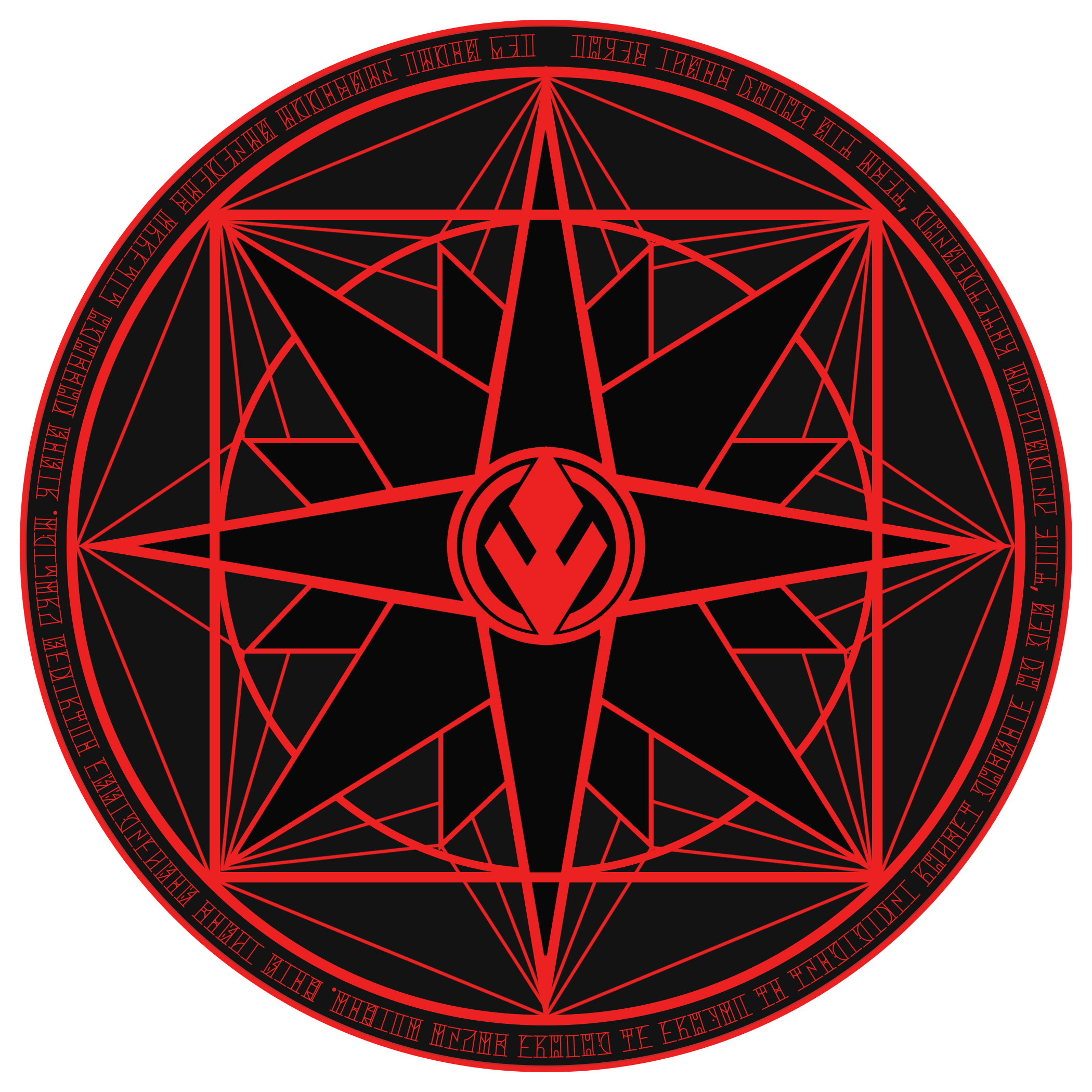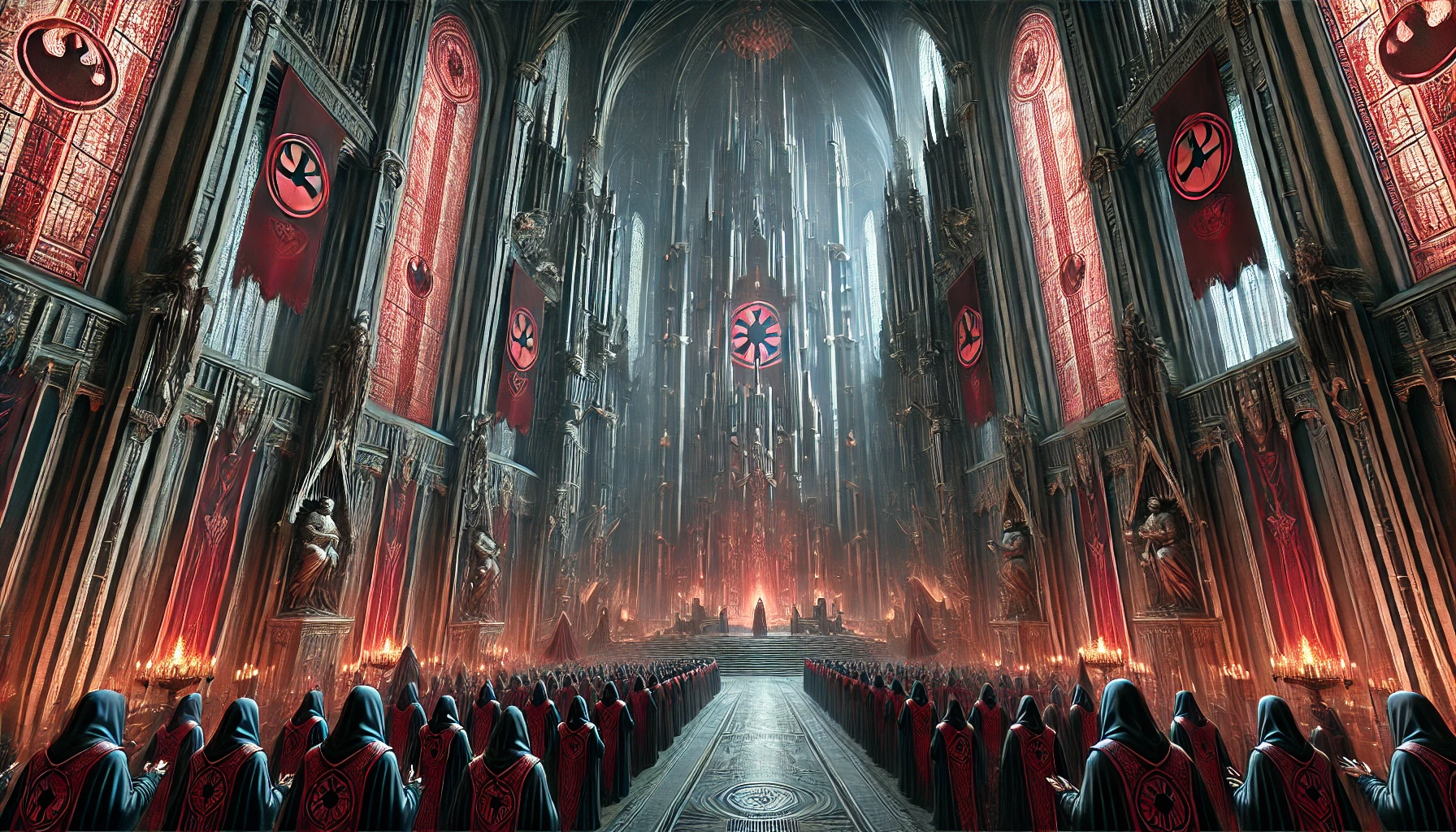Ozymandias


Sith Eternalism
An Overview
Preface:
It has been mentioned over the years that Sith Eternalism was hard to understand, and I can't blame people for it. I've rarely written down a comprehensive guide on what it is, what its meant to be, and how people can engage with it. As such, the only real Sith following it is
 Darth Empyrean
. I wanted to finally try and correct that a bit, by getting my thoughts down in a comprehensive manner on it. I want to put down enough of it in depth that people can read up on this, consider the possible narrative implications of what Sith Eternalism is meant to be, and then strive to interact with it - either through joining it, aligning their characters beliefs with it, or at least being able to disagree with it in relation to their own beliefs.
Darth Empyrean
. I wanted to finally try and correct that a bit, by getting my thoughts down in a comprehensive manner on it. I want to put down enough of it in depth that people can read up on this, consider the possible narrative implications of what Sith Eternalism is meant to be, and then strive to interact with it - either through joining it, aligning their characters beliefs with it, or at least being able to disagree with it in relation to their own beliefs.
This 'religion' is meant to be a long form narrative plot point that helps define a characters story. Darth Empyrean has bought into it fully, as he was born a Slave and blames fate for that - but even he doesn't know the truth depths of what Eternalism actually is. Others, like
 Darth Carnifex
, know much about what the Sepulchral is up to - but to what ends, they can't be sure. Many of the most powerful Sith on Chaos have tried to burn the Sepulchral out, but have failed. They are an unseen, guiding hand to the Sith Order and to more beyond that.
Darth Carnifex
, know much about what the Sepulchral is up to - but to what ends, they can't be sure. Many of the most powerful Sith on Chaos have tried to burn the Sepulchral out, but have failed. They are an unseen, guiding hand to the Sith Order and to more beyond that.
A quick note about this article for transparency; I have based much of Sith Eternalism off of real world philosophy texts. Nietzsche, Aurelius, Hegel; each of these have portions of their ideology transposed into this. As a result, I have struggled to explain it in any way that is concise or approachable by the average person who doesn't share my very niche interests. As such, I have utilized AI to help me collect my thoughts and summarize them in a way that is both readable, and usable for others. Please keep that in mind, I am very lazy, and this has helped me get this onto actual paper.
If you have any questions, feel free to tag me in the replies here.
THE CODEX ETERNAL
The Sacred Doctrine of the Sith Eternal
Compiled from the Teachings of the Dark Prophets and the Words of the Lords Who Came Before
BOOK I: THE WILL OF THE SITH
1:1 - The Great Lie
"The Jedi teach of balance. The weak speak of peace. But we, the Sith, know the truth: the Force is not balance. It is not peace. It is power."
The Force is the great deception, the unseen hand that guides the fates of the unworthy. It is a current, flowing unseen, dictating the rise and fall of empires, the birth and death of kings. It chooses victors and discards the weak, shaping the galaxy in its endless design.
But to whom does it answer? To whom does it serve?
The answer is known only to the few, and it is a truth the Jedi would hide, the Republic would deny, and the weak would cower from.
The Force does not serve you. It does not grant power to those who deserve it. It does not shape destiny for the betterment of the strong. It serves only itself.
And so the Jedi, in their ignorance, submit. They bow before the Force, allowing it to carry them like driftwood upon a sea. They borrow its power, like beggars, knowing that should they resist, it would cast them aside as surely as it casts aside all who oppose its will.
But the Sith are not slaves. The Sith do not bow.
We take.
"The chains of fate are bound to all things.The weak accept them. The Jedi embrace them.But the Sith break them."
1:7 - The Path of the Eternal Sith
"Breaking chains is the first step. But the war against fate is eternal."
It is written that many Sith have risen. Many Sith have conquered. Many Sith have looked upon the galaxy and called themselves masters of destiny.
And yet—where are they now? Where are the empires they built? Where are the Sith who ruled before us?
The answer is simple: the war was not over.
The Sith do not strive for an end. The Sith do not seek peace. To imagine a perfect Empire is to imagine a prison where the weak may rest. The Sith do not rest.
We struggle. We break. We rise.
The Jedi have one path—their road is narrow, their vision finite. But for the Sith, there is no road. Each Sith Lord must carve their own path through the galaxy, cutting through the weak and the false, carving their will into existence.
This is the law of Eternalism: Power is not borrowed. Power is not given. Power is taken.
"The Jedi walk in the light, guided by an unseen hand.The Sith walk in the dark, and must see with their own eyes."
BOOK II: THE WAR AGAINST FATE
2:1 - The Force as the Great Oppressor
"To serve the Force is to be a slave. To command it is to be free."
The Force is no ally of the Sith. It punishes those who refuse its will. It strikes down those who dare to impose their own vision upon the galaxy. It allows Jedi to thrive, so long as they obey its whispers. And for those who resist—those who would claim power instead of being granted it—it ensures their downfall.
Many Sith have fought and failed. Their flesh withered. Their minds crumbled. Their empires burned. Some call this the cost of the Dark Side, but this is another lie. The Force itself wages war against us.
"To take power is easy. To keep power is war.War against all things. War against the chains unseen."
But we do not fear war. War is the Sith's domain. And so we shall wage war upon fate itself.
Where one Sith falls, another will rise stronger.
Where one empire burns, another will forge itself from its ashes.
Where the Force seeks to deny us, we shall impose our will and take what is ours.
2:12 - The Law of the Eternal War
"Each war begets the next. Each Sith must be surpassed. This is the way of ascension."
Some Sith dream of a final victory. A throne eternal. A reign unchallenged.
But this is weakness.
To halt the war is to submit to fate.
The Sith must never rest. Each Sith Order must rise, and in time, it must be destroyed. Each Sith Lord must rule, and in time, they must fall to a stronger hand. The Sith must forge themselves anew, each generation greater than the last, for to stagnate is to accept the fate the Force has written.
The Sith Eternal is not an empire. It is not a doctrine of stasis. It is a fire that must never be allowed to dim.
"A Sith is not a ruler, nor a conqueror.A Sith is the storm that devours both."
This is the law of power: Only through destruction may the strong be revealed.
BOOK III: THE ASCENSION
3:1 - The Sepulchral and the Guardians of Power
"There are those who guide the Sith, who ensure the eternal war shall never end."
The Sith Eternal is not without architects. It is known that there are those who came before, those who shaped the path that led us here. They are known by many names—the Keepers, the Whisperers, the Lords in Shadow.
But know this: They do not rule. They do not control. They do not seek the throne.
They watch. They ensure that the strong may rise, that the weak may fall. They give knowledge to those who seek it, power to those who would claim it. And when the time comes, they will vanish, as they always have, so that the cycle may begin anew.
Their purpose is not dominion, but eternity.
"Empires rise, and empires fall.But the Sith endure.For we are eternal."

"At the end of all things, the Master will look upon his work and see the void staring back.
He will reach out for power, and power will consume him.
He will seek to master fate, and find nothing remains." —The Sepulchral Prophecies, Verse 11:43
SITH ETERNALISM: AN OUT-OF-CHARACTER OVERVIEW
An Open Invitation to Writers Seeking to Expand the Sith Mythos
What is Sith Eternalism?
Sith Eternalism is a philosophical, theological, and narrative framework that offers a compelling, internally consistent interpretation of the Sith Order. It expands beyond traditional Sith ideology, providing a rich, structured belief system that integrates themes of power, fate, struggle, and cosmic horror.
At its core, Sith Eternalism is the belief that the Force is a prison, fate is an illusion, and the Sith are the only beings strong enough to impose their own will upon reality. Unlike traditional Sith doctrines that emphasize power for its own sake, Sith Eternalism views the Sith's struggle as a cosmic war against fate itself.
However, lurking beneath this grand vision is a dark, hidden truth—a revelation so profound and terrifying that even most Sith do not know it. This secret purpose is controlled by the Sepulchral, a shadowy Sith Illuminati that ensures the galaxy continues on its path toward an unseen horror: the Beast, a force-devouring metaphysical abyss that could consume all of existence.
Why Join Sith Eternalism?
For writers who love philosophy, deep worldbuilding, long-form character arcs, and hidden lore, Sith Eternalism offers a vast, interconnected story space that encourages creativity, complexity, and long-term narrative payoffs.
1. A Unique Sith Perspective
Most Sith factions follow a similar trajectory:
- Rule of Two Sith – Traditional master-apprentice structure, obsessed with power.
- Sith Empires – Large authoritarian orders that inevitably collapse due to infighting.
- Dark Side Cults – Religious zealots who worship Sith ideals in various forms.
Sith Eternalism combines the best elements of all three while introducing a new layer of ideological depth:
- The Sith are engaged in a war against fate itself.
- The Force is not their ally—it is their enemy.
- Sith infighting is not a weakness—it is necessary for evolution.
- The Sith Order is not meant to last—it is meant to be reforged through struggle.
This approach makes Sith Eternalists feel distinctly different from other Sith. They aren't just fighting for power—they are fighting for the ability to shape the fundamental laws of the universe.
2. A Living, Breathing Sith Religion
The Codex Eternal acts as an in-universe "Sith Bible," providing a structured belief system that characters can debate, interpret, and challenge.
- Sith Eternalism feels real—it has holy texts, conflicting interpretations, and theological schisms.
- Different sects and interpretations can arise, leading to philosophical and ideological conflict within the Order itself.
- Characters can be true believers, heretics, reformers, or zealots, all shaping the doctrine in their own way.
This makes Sith Eternalism a living ideology that evolves with player actions and narrative developments rather than a static philosophy.
3. The Sepulchral: A Sith Illuminati
The Sepulchral are the ultimate manipulators—an ancient and unseen Sith council that has guided the Sith for millennia.
They are:
- Unknowable – No Sith Lord truly understands their depth.
- Omnipresent – They control the flow of Sith history without ever revealing their true motives.
- Terrifying – If they have existed for thousands of years, then what have they been preparing for?
For writers, the Sepulchral offer an element of mystery, paranoia, and long-term narrative twists:
- Is your Sith Lord truly in control? Or have they been subtly guided toward their own downfall?
- Are the Sepulchral mentors? Enemies? Or something beyond comprehension?
- What happens if a Sith Lord learns too much? Do they become part of the Sepulchral? Or do they become its next victim?
These elements make the Sepulchral an excellent antagonist, ally, or narrative driver in any Sith-based story.
4. The Hidden Horror of the Beast
At the deepest level, Sith Eternalism hides a cosmic horror element—the Beast, a concept only known to the Sepulchral and the most powerful Sith scholars.
The Beast is:
- A metaphysical black hole that grows with every Sith's ambition.
- A hidden force that has been devouring Sith Lords for millennia.
- A thing that the Celestials sacrificed themselves to contain.
Most Sith believe they are fighting for power and independence. But the truth is far worse—every Sith who strives to impose their will upon reality unknowingly accelerates the unraveling of the Force itself.
For writers, this adds a deep existential dread to the Sith Eternalist cause:
- What if your character realizes the truth? Do they continue down the path? Or do they resist, knowing that resistance might be impossible?
- If the Beast awakens, what happens? Will your character embrace the darkness or fight against something beyond mortal comprehension?
5. Flexible Storytelling & Character Arcs
Sith Eternalism provides multiple narrative entry points, meaning any type of Sith character can fit into its structure:
- The Devout Believer – A Sith Eternalist who embraces the faith, seeking to ascend.
- The Skeptic – A Sith who follows Eternalism for power but questions its validity.
- The Heretic – A Sith who believes the Order has strayed from its true path.
- The Sepulchral Pawn – A Sith who unwittingly furthers the Sepulchral's true goals.
- The Seeker of Forbidden Truths – A Sith who begins to uncover the Beast's reality.
- The Rebel Against Fate – A Sith who fights not just against Jedi, but against the fundamental nature of reality itself.
This flexibility makes it easy for new and existing Sith characters to find a place within the narrative framework of Sith Eternalism.
How to Join or Integrate Sith Eternalism Into Your Writing
- Incorporate Sith Eternalist Themes Into Your Character's Ideology
- Does your character believe in fate as a prison?
- Do they struggle against the idea that the Sith are destined to fall?
- Do they seek to build a Sith Empire, knowing that it must one day collapse?
- Engage With the Sepulchral (Directly or Indirectly)
- Has your Sith ever met a Whisperer—a mysterious Sith figure who seems to guide them?
- Has your Sith ever encountered ancient Sith texts that hint at something deeper?
- Does your Sith suspect that something greater is manipulating Sith history?
- Explore the Hidden Nature of Power
- Has your Sith ever sensed a hunger beyond themselves—a power greater than the Dark Side itself?
- Does your Sith ever question why the strongest Sith are the first to fall?
- What happens when your Sith realizes their ambition is feeding something unseen?
- Choose a Role in the Grand Scheme
- Will your Sith become a loyal Eternalist, fighting for power and ascension?
- Will they seek the truth and uncover the Beast?
- Will they challenge the Sepulchral, only to realize there is no escaping their design?
Final Thoughts
Sith Eternalism is more than a faction—it's a philosophical battleground that invites writers to explore power, fate, and the unseen horrors lurking behind the Dark Side.
Whether your Sith seeks power, knowledge, or the destruction of fate itself, Sith Eternalism offers a complex, engaging, and deeply rewarding narrative framework for any writer who wants to expand the Sith mythos in bold new directions.
The question is no longer:
Will you take power?
The question is:
Will you realize what you're truly feeding before it's too late?
Last edited:





























